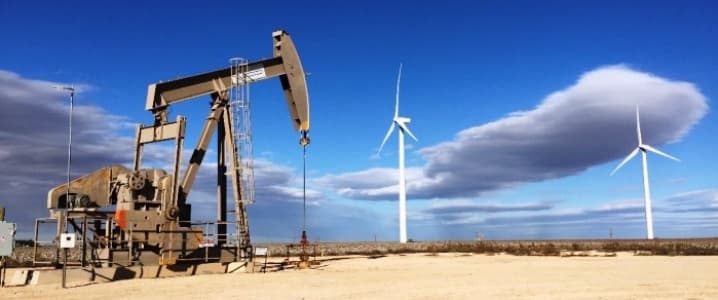U.S. shale oil drillers have tactically used hedging to survive during the current oil crisis. Along with the technological advances, hedging has been one of the reasons for the survival of the shale oil industry.
However, the shale oil producers seem to have reduced their hedging activity. They are now buying fewer put options, which has resulted in reduced demand for put options. Therefore, the relative cost of put options is down to its lowest level since August.
Recently, Societe Generale SA said that the put skew for one year forward contracts fell below 6 percent, from above 8 percent in February.

(Click to enlarge)
Why have the US shale oil drillers reduced their hedging?
Hedging is undertaken to mitigate the risk and uncertainty of prices for the products at a future date. If the producers believe that the rewards outweigh the risks, they reduce their hedging activity. Looking at the current option pricing, it looks like the U.S. shale oil drillers are in no hurry to hedge at lower oil prices.
The fall in WTI 2018 swap prices has made it “unattractive for most U.S. shale oil producers to hedge," Jesper Dannesboe, a London-based commodity strategist for SocGen, wrote in the report. “Unless oil prices rally meaningfully, that will continue,” he said, reports Bloomberg.
Related: Iraq Agrees With Deal Extension, But Boosts Oil Exports To Record Levels
OPEC is the reason for the reduced shale oil hedging activity
From 2014-2016, OPEC was at loggerheads with the shale oil industry. It was important for the shale oil drillers to resort to hedging to survive during severe downturns in crude oil prices.
However, the picture has changed from November of last year, when OPEC decided to support oil prices. Now, the onus to keep prices higher is with the OPEC nations. So, every time crude oil prices fall below $50 per barrel, OPEC attempts to talk prices up again.
Hence, the shale oil drillers don’t have to fear that crude oil prices will keep falling and they will end up losing their business. They are likely to wait for prices to bounce higher to place their hedges again. There is no urgency to resort to hedging at beaten down levels.
Rystad Energy says oil production is well protected
The shale oil drillers have used the low drilling costs to amass a huge inventory of drilled but uncompleted wells (DUCs). Even if crude oil prices were to fall to $30 per barrel, most of the DUCs will be commercially viable for completion, according to a Press Release by Rystad Energy.

(Click to enlarge)
“If the prices go down to 30 USD/bbl and we assume that operators behave rationally, we should observe relatively quick adjustment of activity, which will result in a temporary contraction of output with stabilization in 4Q at the level 100 MBbld lower than the current output as base production gets more mature,” said Artem Abramov, Vice President Analysis at Rystad Energy.
“In reality, history tells us that many operators will rely on hedging gains or simply outspend more, so short-term evolution of supply in the 30 USD/bbl world might end up much closer to the rational 40 or even 50 USD/bbl scenarios,” Abramov added.
In other words, the risk to the US oil production is minimal even if crude oil prices sank to $30 per barrel levels.
Related: Oil Prices Edge Higher As U.S. Oil Inventories Fall Again
A few of the Shale oil drillers have hedged for 2017
It is not that all the shale oil drillers have dropped hedging from their agenda. According to a Wood Mackenzie study, the hedging activity by the leading independent producers has increased over the previous year. The producers have hedged 27 percent of this year’s expected production, which is 10 percent higher compared to last year.
Pioneer Natural Resources Co., the leading shale oil producer, has hedged 85 percent of its expected oil and gas production for this year, according to company’s May 4 conference call. They have also hedged 20 percent of the next year’s production.
Other large players like Parsley Energy Inc., Devon Energy Corp., and RSP Permian Inc. also echoed a similar strategy. They had already placed their bets or were waiting to place them at the opportune time.
After the May 25 OPEC meeting, we may again see a flurry of hedging activity if oil prices bounce back sharply higher.
By Rakesh Upadhyay for Oilprice.com
More Top Reads From Oilprice.com:
- Artificial Intelligence Is Crucial For The Energy Industry
- Russia Reemerges As China’s Top Crude Supplier
- Billions In Oil Investments At Stake In Iranian Elections


















